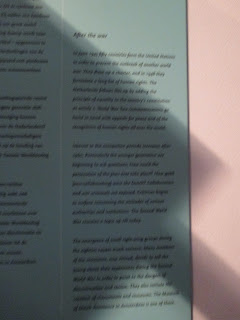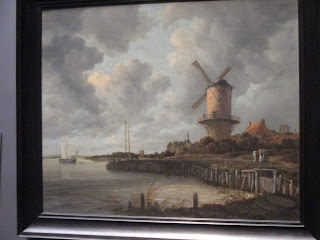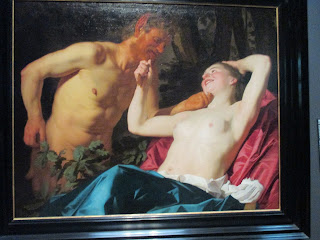Anyhow, first we went to the Verzetsmuseum, which translates to resistance museum and chronicles the difficult decisions the Dutch were forced to make under Nazi occupation. After a "heroic" five day battle with Dutch forces, the Germans came against more resistance than they expected and responded by leveling the civilian city center of Rotterdam (Nazis, war crimes, surprising right?). Well, their capitulation came very quickly after their city had been razed to the ground from the skies and from 1940 to the end of the war, they were under occupation. The highlighted motif of the struggles was summed up in the question of "adapt? cooperate? or resist?" The museum also had a great collection of artifacts from the Nazi occupation including lots of propaganda posters for both the Dutch Nazi Party and their liberal archenemies. They also had a great audio tour as well as a few interactive portions, one that I enjoyed was being given a magnifying glass and being told to spot the forged IDs and ration cards from the genuine ones. It was a depressing part of their history, one most would probably like to forget, and I can honestly say that I respect their candor in admitting their involvement. Most countries, like Poland for example, claim truthfully or not, that they had nothing to do with any of the Nazi atrocities and that none of their countryman participated without a gun to their head or family held hostage. That must be patently false, because how could an occupying force maintain order without any local administration? Meanwhile, the Dutch honestly admitted to having a Dutch Nazi Party well before the war, and while their long history of public welfare prevented the same social unrest that occurred elsewhere, they admit to worsening conditions that led to their own political turmoil. Side by side they told the stories of those that held Jews in their attics and those that joined the Nazi party for personal gain, the stories of the resistance that smuggled guns and forged ration cards so that the hidden Jews could be fed and the stories of those that turned in their own neighbors out of jealousy. The entire museum was well-presented and honest to the turmoil and personal dilemmas that occurred under their unfortunate reality.
Here's the pictures I took from the Verzetsmuseum,
I also took hundreds and hundreds of photos at the Rijksmuseum but that does not really pertain to my project so I am just going to put twenty or so of them on here. I would say my favorites, but that would require going through way too many photos.









































































































































































No comments:
Post a Comment